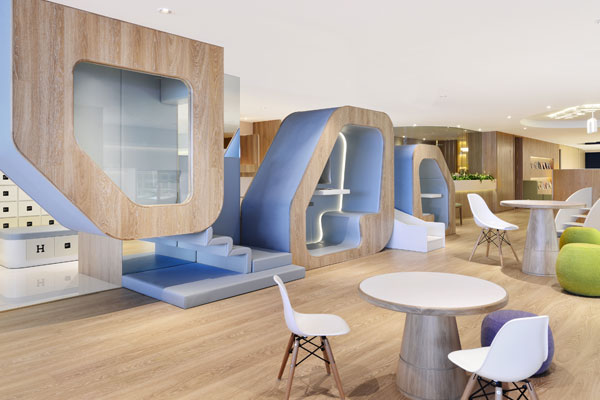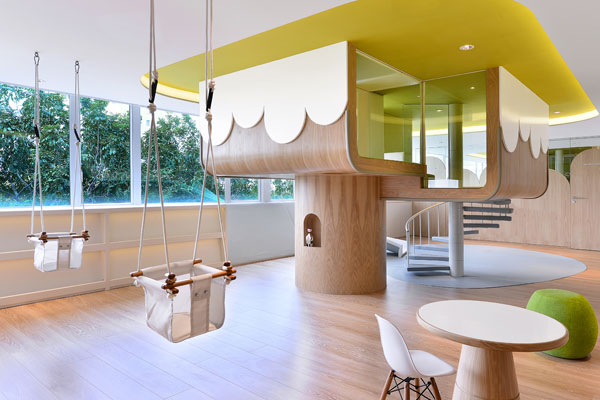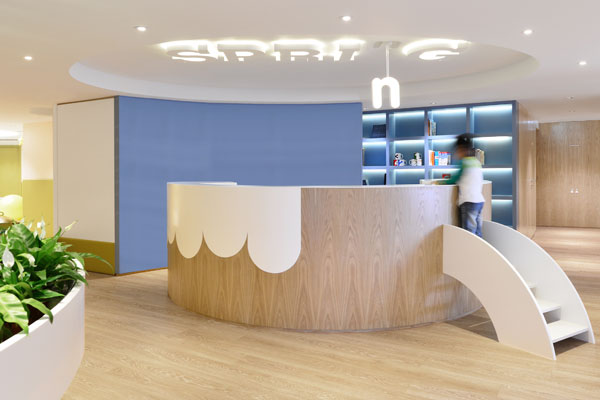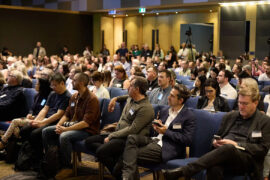Likening design to dessert, award-winning Hong Kong based designer Joey Ho tells us how he aims to bring ‘a slice of joy’ to clients and users of the spaces he designs.

March 27th, 2014
You were born in Taiwan, grew up in Singapore and are now based in Hong Kong. How has living in these three cities shaped your perspective of design?
In the early stage of my childhood I was living in a very traditional Taiwanese environment. That gave me a traditional outlook. But I was lucky to be educated in Singapore. It has a really good mix of East and West and makes you more open to the western world. So I really benefited from that. And journeying to Hong Kong, the city is now in a situation where it’s not certain of what it is. We’re not totally Chinese, and we’re not totally Western. I think this kind of uncertainty makes me able to explore different things in design. So I feel that the three cities have really offered me different perspectives of our own basic Chinese culture.
You studied architecture and even practiced for a time. Why did you choose then to move your focus to interior design?
I feel that I’m still very attached to architecture. As a practice I decided to move into interior design because I realised that it was more closely aligned with my personality. If I stay in a project for too long, I’ll get bored, and I realised doing architecture requires much more patience and attention. I decided that I should stick to interiors, especially when I realised that I could approach an interior project like I would an architectural project. And that’s where I find my own comfort zone in interior design; it has helped me to explore different things, in different ways.
You state on your website that “Design is like making dessert, a recipe of feelings to make people happy.” How do you translate this manifesto into your projects?
We try to explore the beauty in life through the design of space. Design for us is not just ‘bread and butter’, just function. We want to give you something ‘tasty’ that you can really enjoy… because the interior relates to your senses, your emotions. We want the user to feel some joy or have a certain response towards the space.
I always also tell my staff that we want to do design because we want to inspire other people. And at the end of the day we also inspire ourselves as part of the process.
Which are some key projects that personify this philosophy?
The first one is the Basheer bookstore in Hong Kong. I designed it and I’m also the co-owner. As designers we normally design for other people, but when you do something for yourself, I think you’ll get a different inspiration, because you tend to look at all aspects of things. I realised after doing this project that I have to make every project almost like my own. I feel some kind of responsibility. It always serves a very important reminder whenever I’m doing any other project that it’s not just for the client, it’s for the user. That’s one project that I always feel excited about, and I think the bookstore helped to shape my approach to design.
The other project is the Spring early childhood centre, also in Hong Kong. That project inspired me in a different way. It seems like we’re always designing spaces based on our own perception, we don’t really sit down and think what they (the user) like. We always push for what we think they like. And there’s a difference.
And the project did not just involve the designer. We had the educators involved and we had a brand/graphic team. So we had a very good team and really looked into it from the perspective of the child, in terms of what they really need rather than what we think they need. After the work was done and when we saw the kids engage with the space, we were very pleased. And that kind of satisfaction came not only from creating a ‘dessert for the client’, but I found myself enjoying the dessert as well! (laughs)

Spring early childhood centre, Hong Kong
What’s your perspective of the interior design scene in Hong Kong?
Hong Kong is still quite exciting. There is a very good mix of people and companies coming here from different parts of the world. And the reason we all gather here is that China is a very big market and the city if Hong Kong is the stepping stone. People are more open-minded here. No sticking to a certain style.
And when it comes to interior design, Hong Kong has a ‘prestige status’ over in China. I think we can hold on to this status for the next five years. After that I can’t tell. (laughs). Around 40 per cent of my projects are in China right now. That said, aside from Hong Kong and China, I also do projects elsewhere.

Spring early childhood centre, Hong Kong
What are you busy with at the moment?
Right now we’re doing a boutique hotel in Pasadena, California. It should open by the end of the year. This project is quite challenging for us. It’s a heritage building and it’s far away.
We’re also working on a bakery/café. It’s something different for us. The cafe is called Urban and so we wanted to portray both the beautiful and ‘ugly’ side of urban. That’s why we’re bringing in a graffiti artist to work on graffiti inside the space. We thought it would be perfect for this scenario.

Spring early childhood centre, Hong Kong
Joey Ho Design
joeyhodesign.com
INDESIGN is on instagram
Follow @indesignlive
A searchable and comprehensive guide for specifying leading products and their suppliers
Keep up to date with the latest and greatest from our industry BFF's!

For Aidan Mawhinney, the secret ingredient to Living Edge’s success “comes down to people, product and place.” As the brand celebrates a significant 25-year milestone, it’s that commitment to authentic, sustainable design – and the people behind it all – that continues to anchor its legacy.

London-based design duo Raw Edges have joined forces with Established & Sons and Tongue & Groove to introduce Wall to Wall – a hand-stained, “living collection” that transforms parquet flooring into a canvas of colour, pattern, and possibility.
The internet never sleeps! Here's the stuff you might have missed

Sub-Zero Wolf Kitchen Design Contest (KDC) announces the remarkable Arizona Biltmore as the location of the 2026 Gala Venue and Winners’ Summit

Tickets for Architecture & Design’s 2025 Sustainability Summit are on sale. This 19 November, engage in ten expert-led panels on urban planning, AI, and circular economy. Join industry leaders in Sydney or online, and gain CPD-accredited insights to drive innovative, sustainable building solutions shaping our shared future. Plus on demand access to recordings.